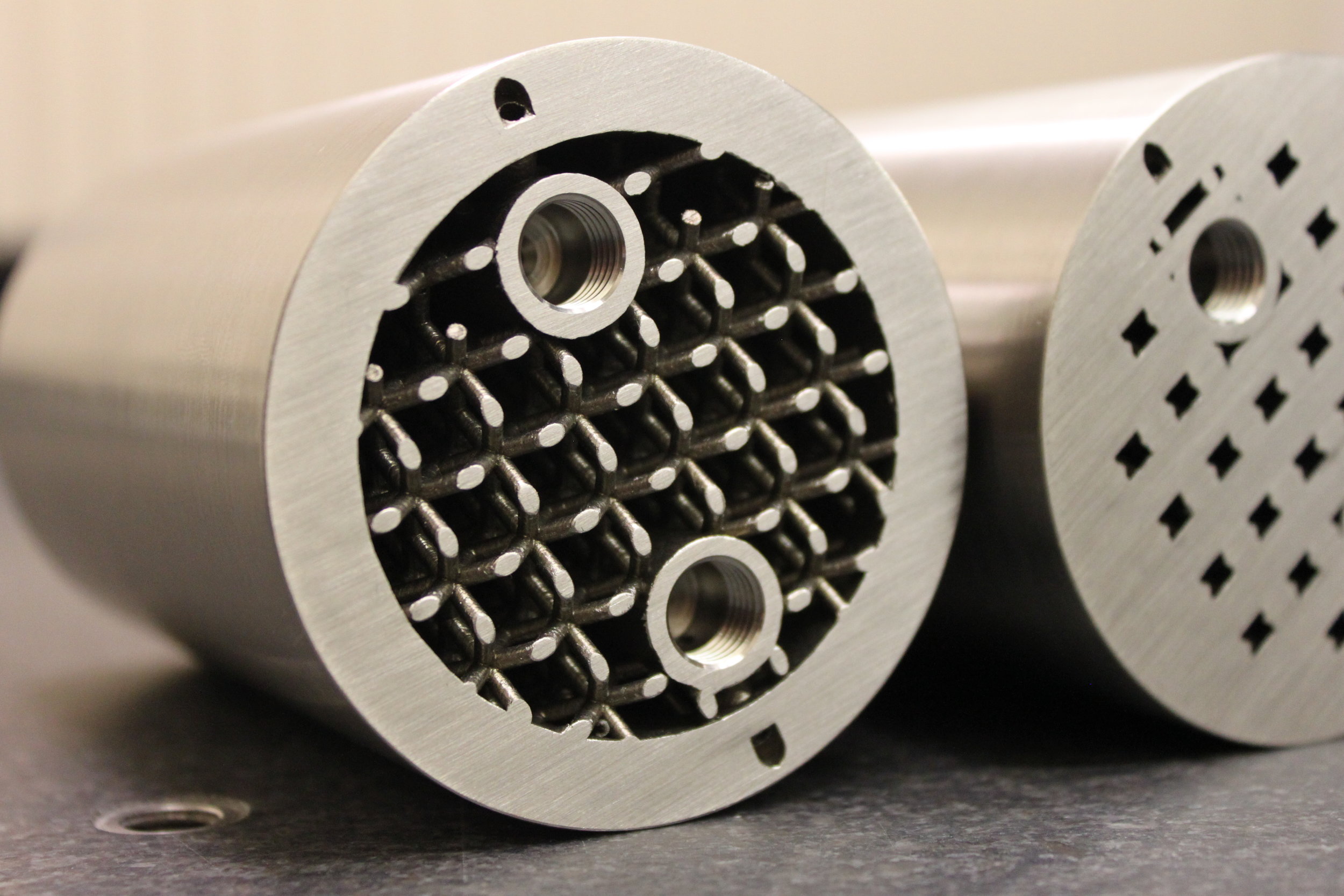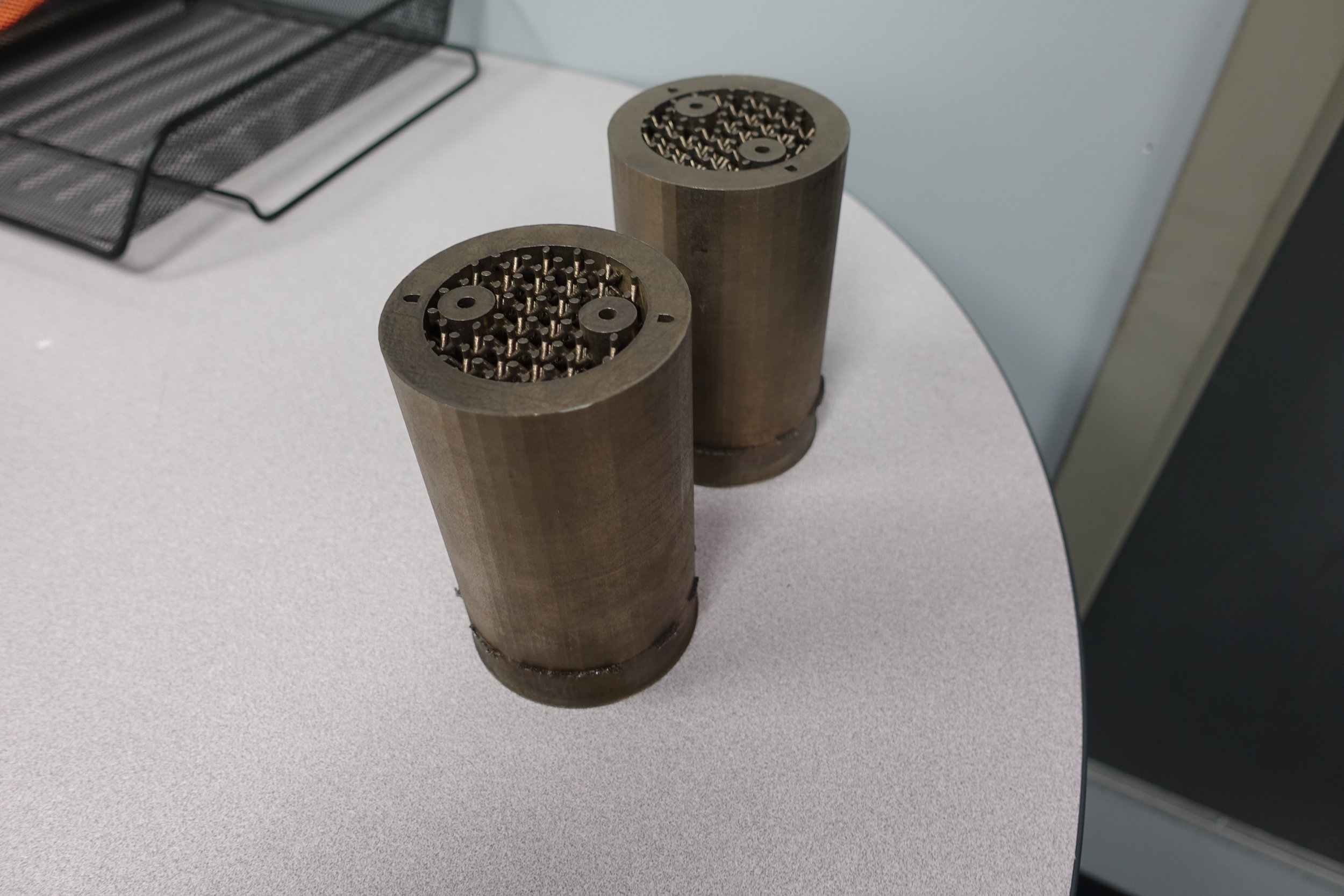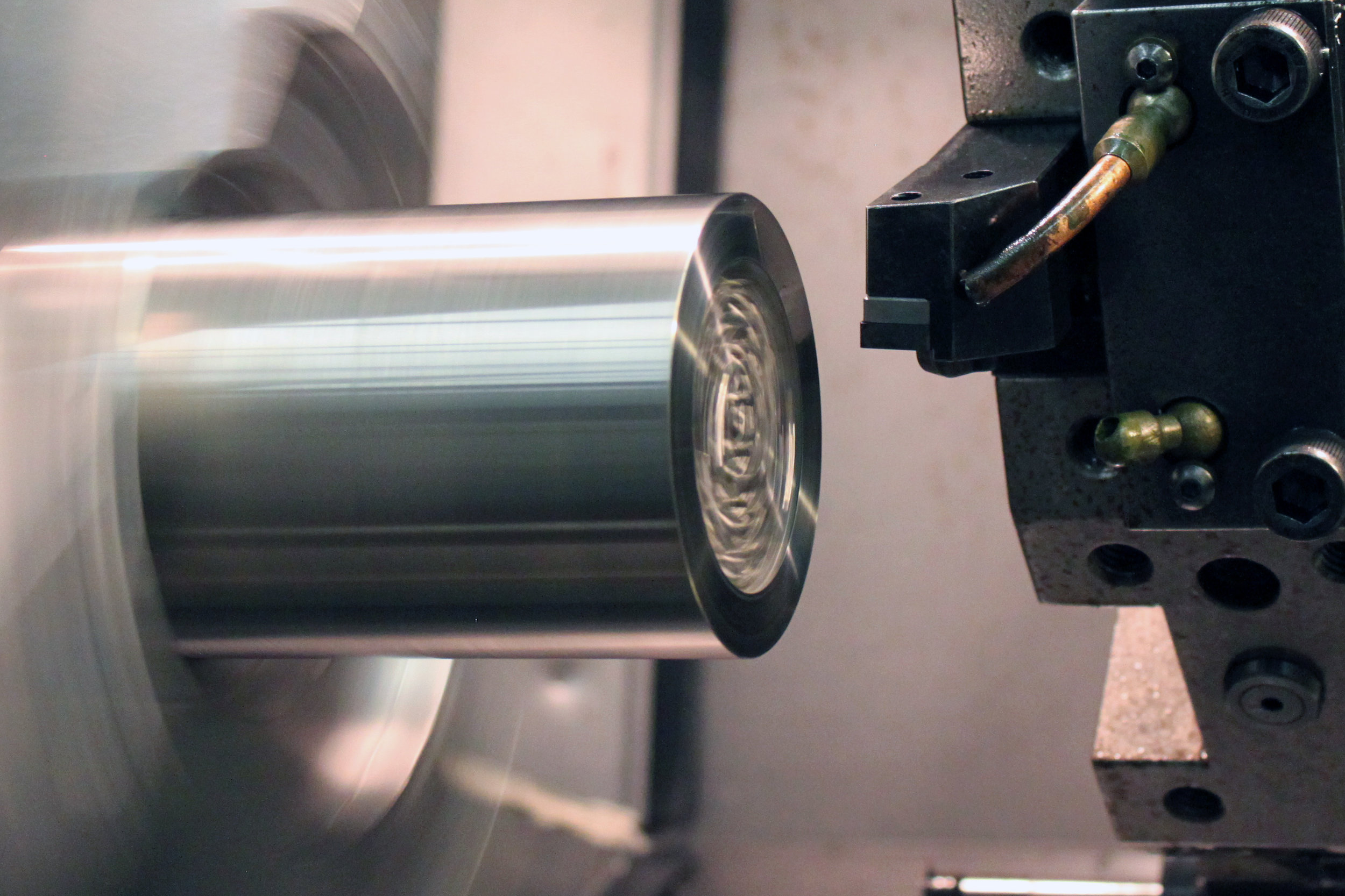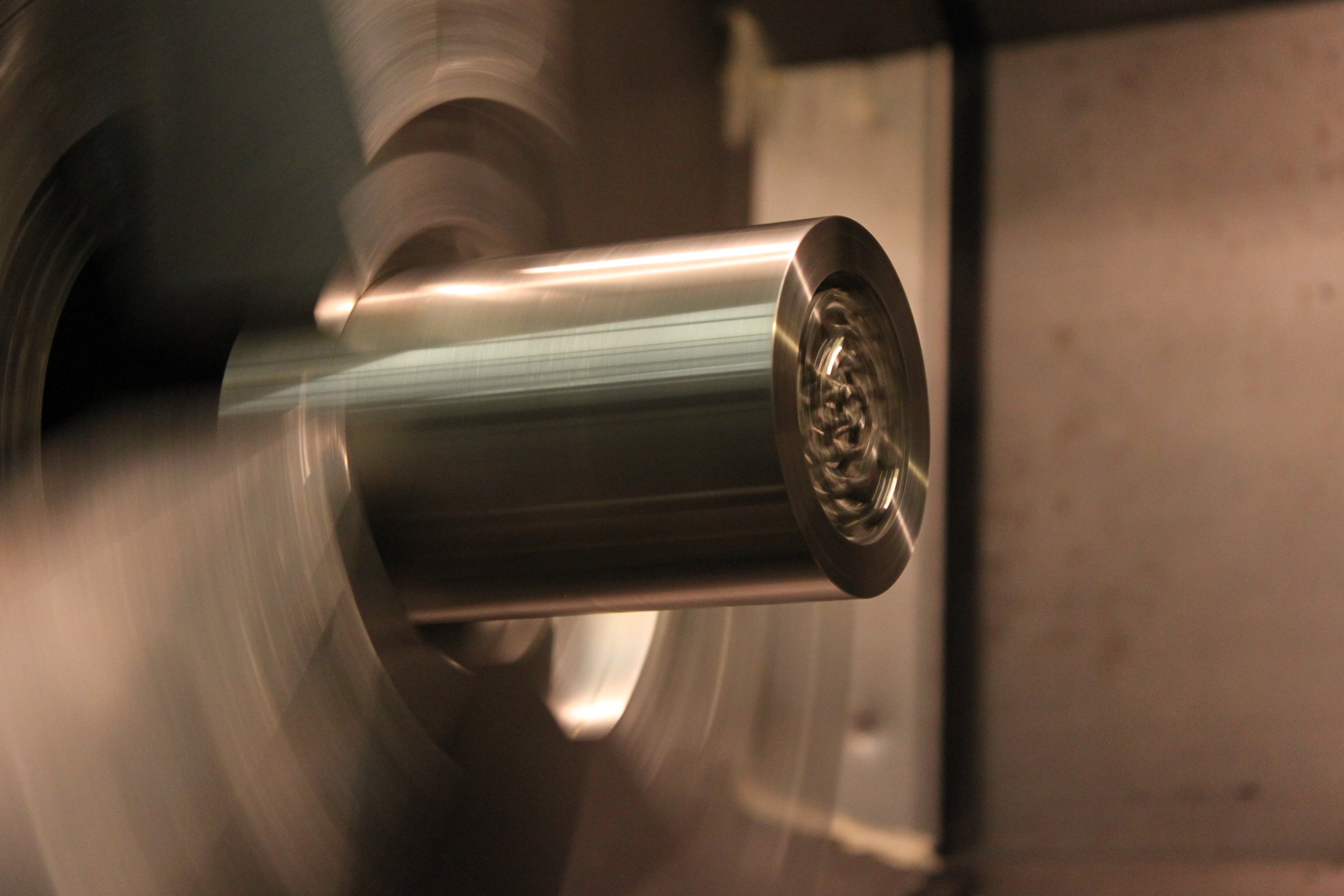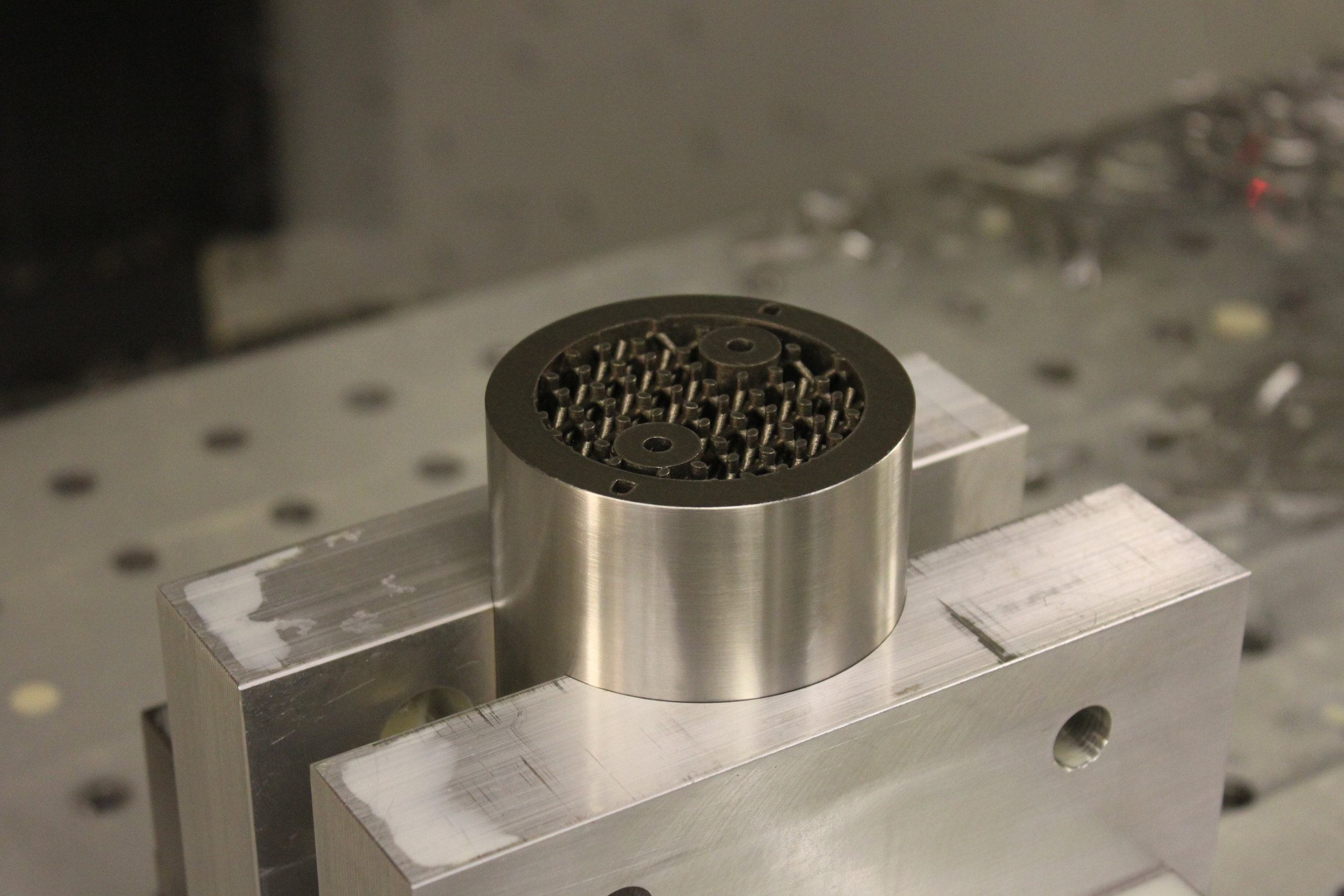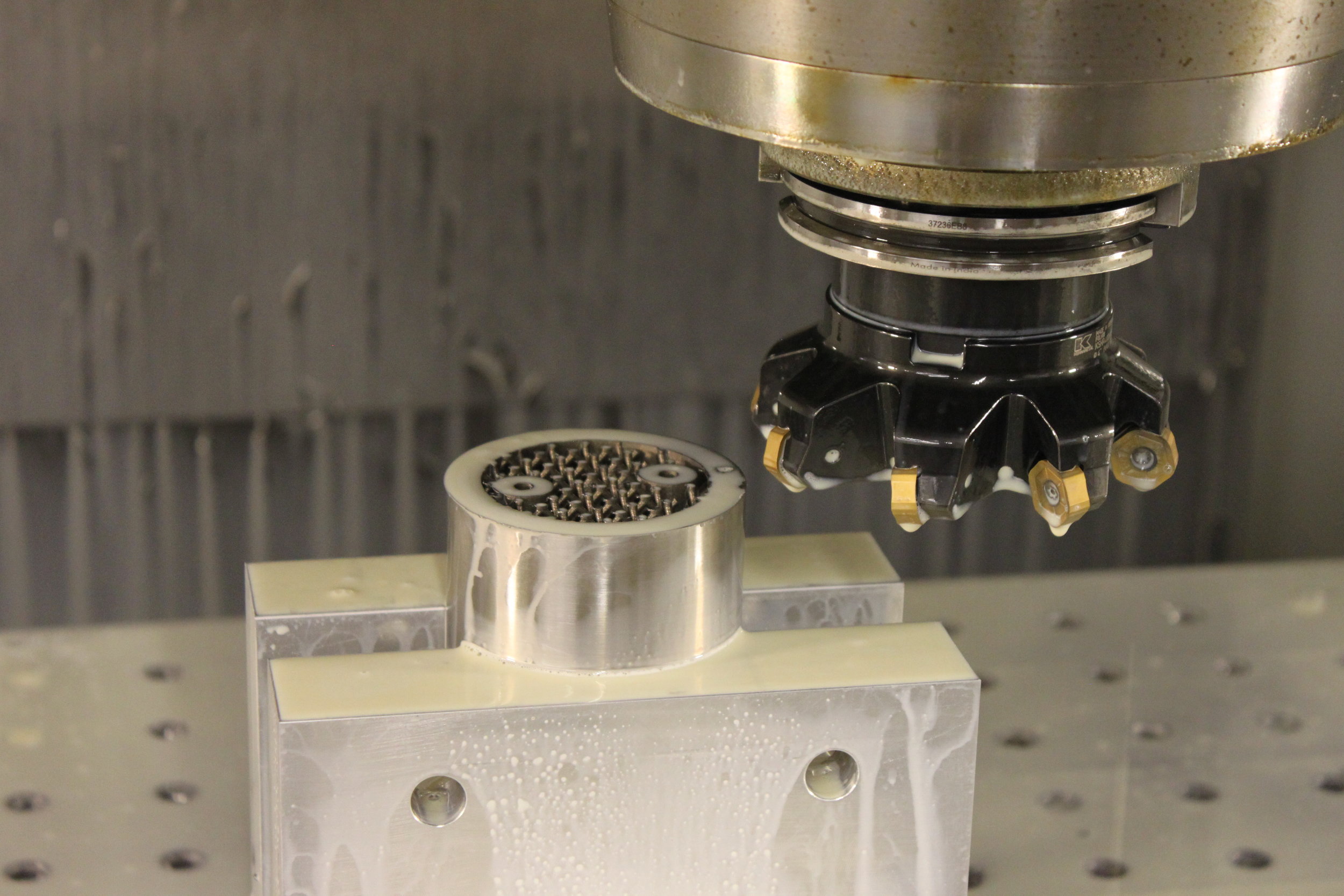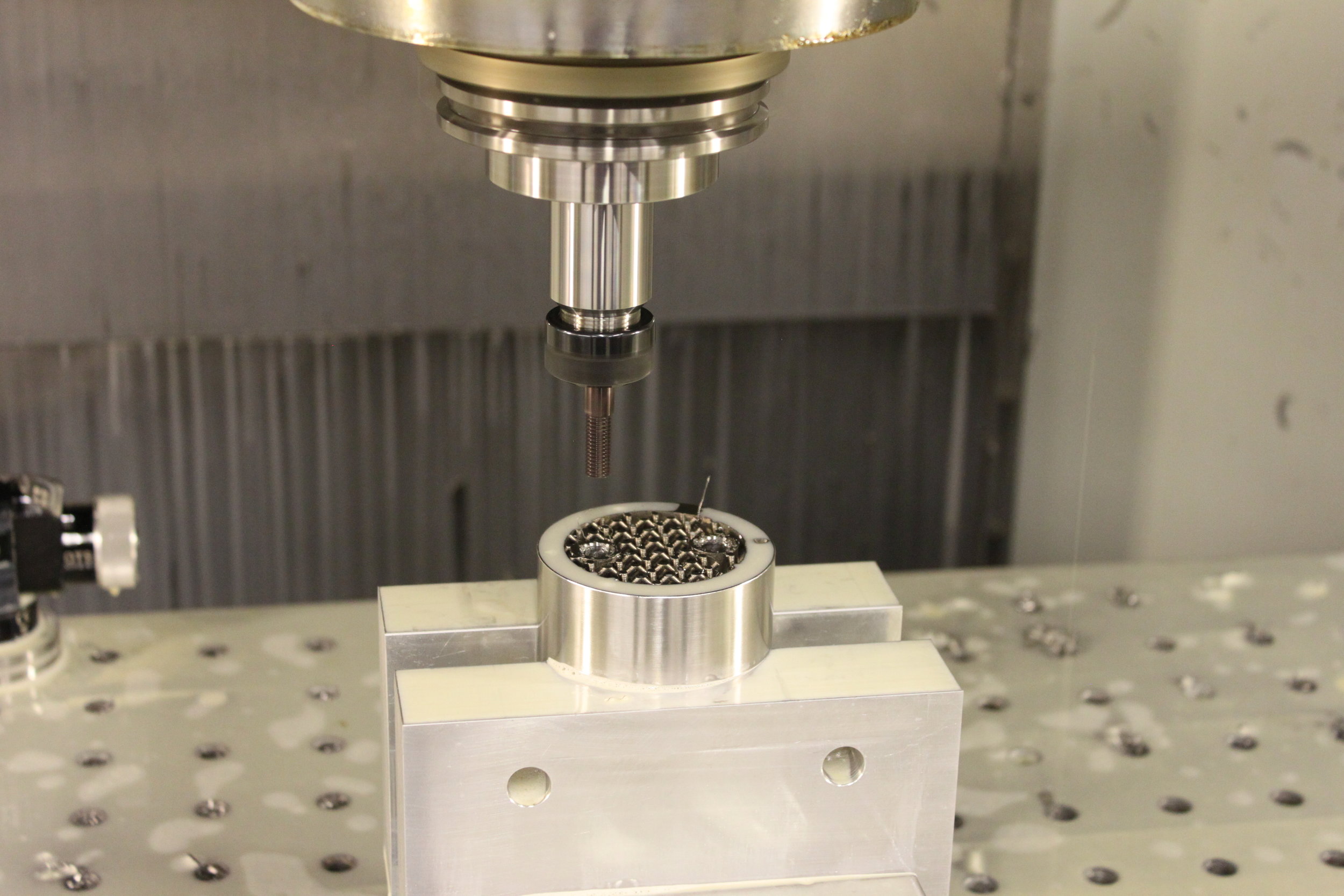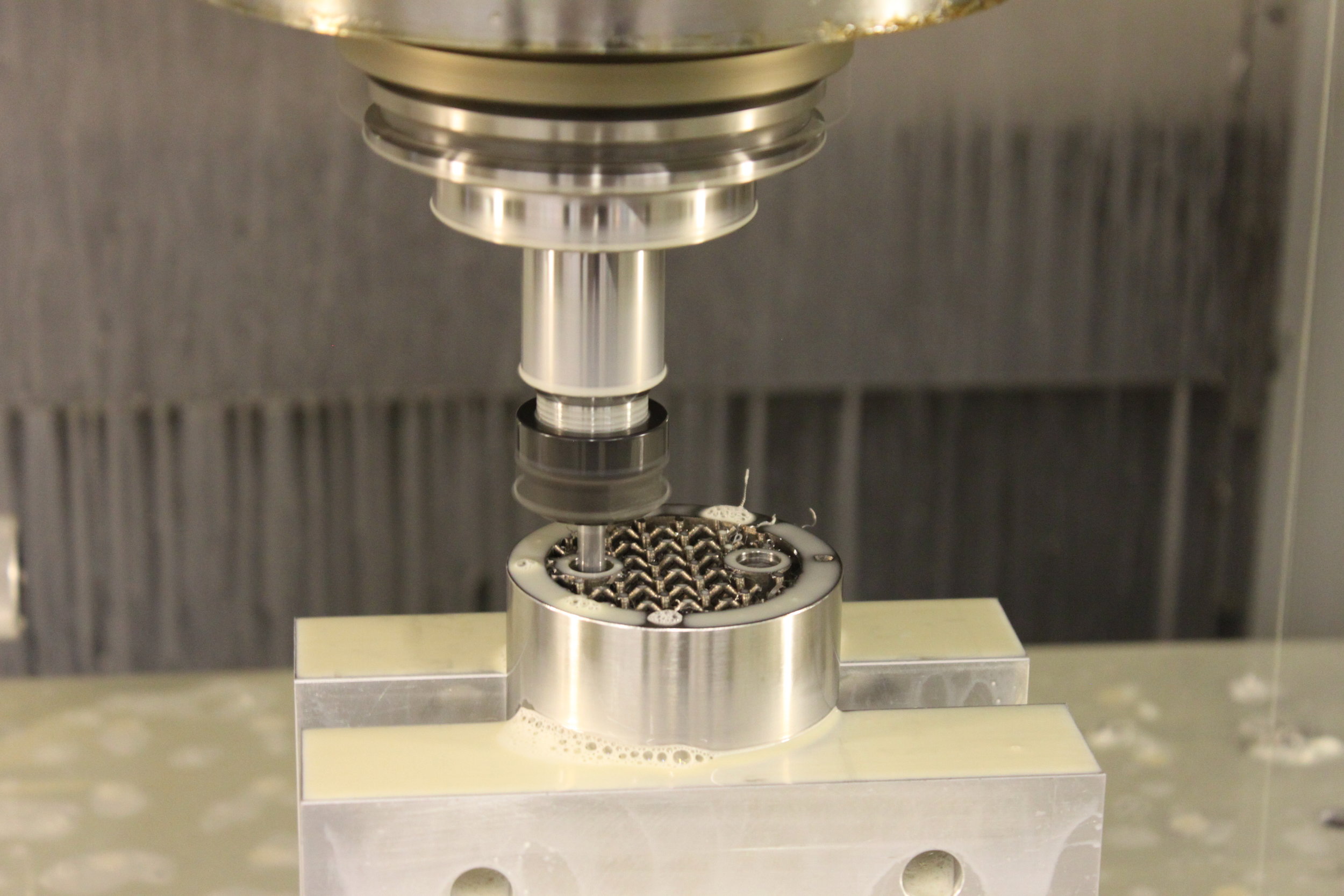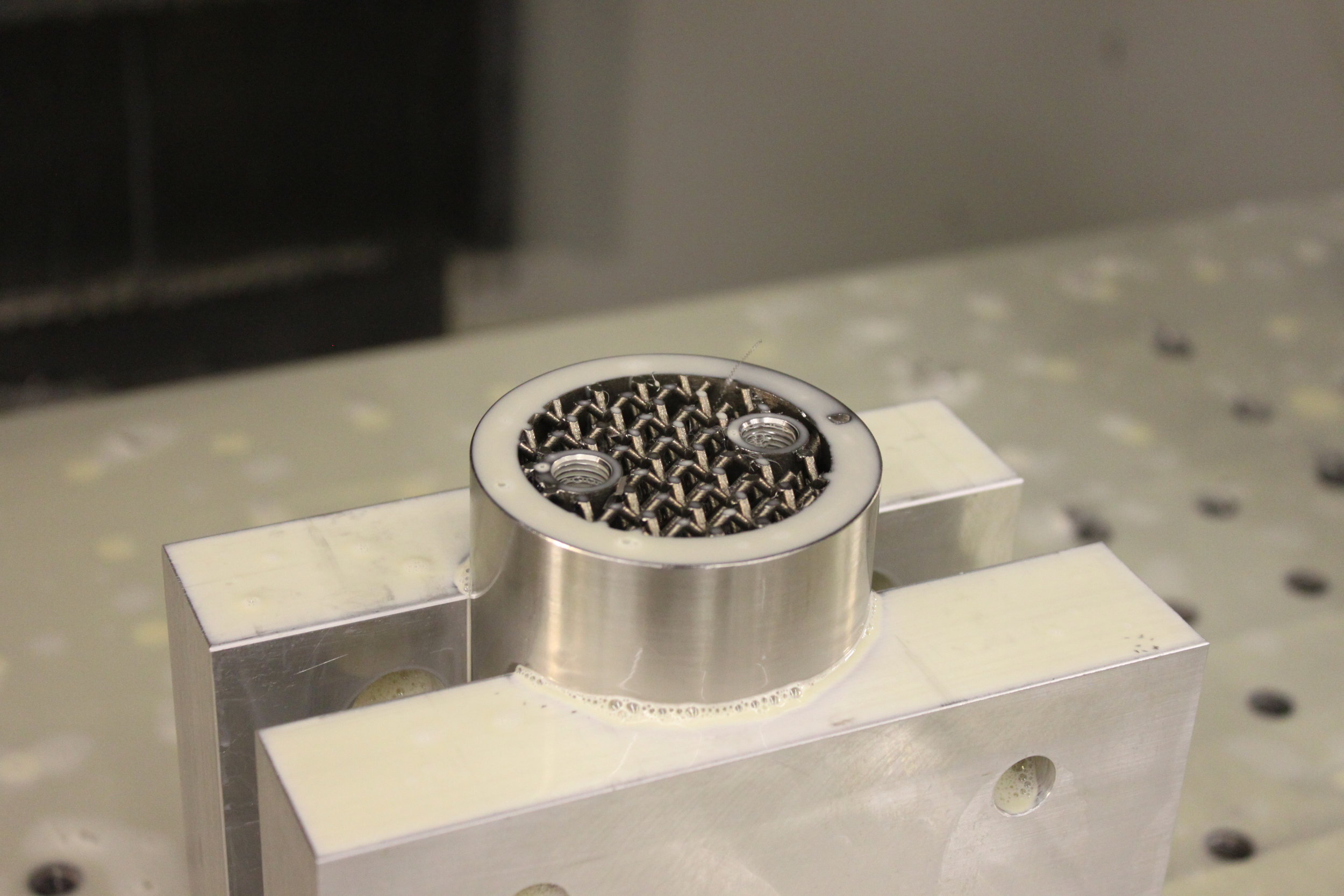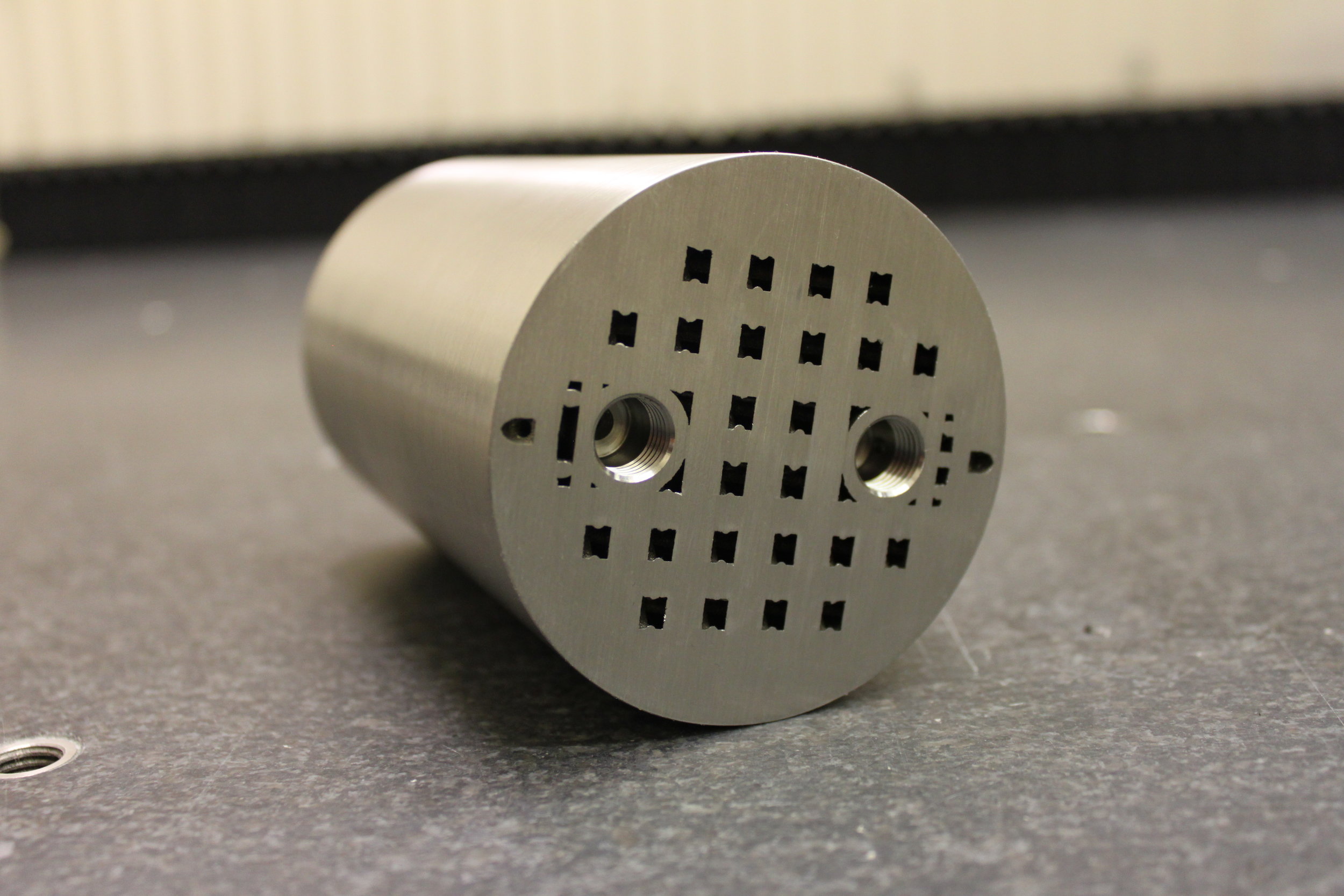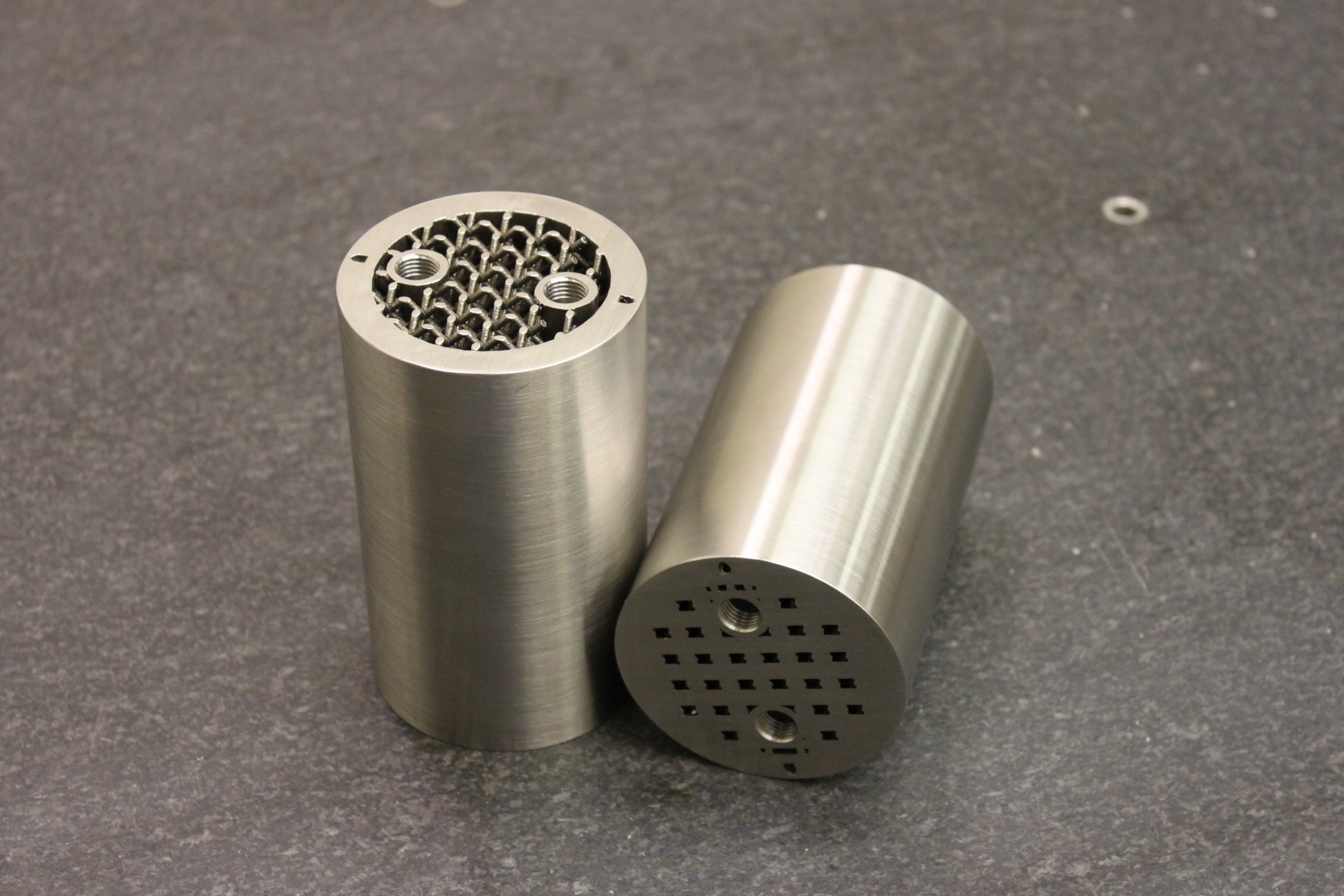The Hybrid Manufacturing Process
3D Printing + Precision Machining = Hybrid Manufacturing
The Hybrid Approach
"Hybrid Manufacturing" refers to the use of additive and subtractive manufacturing techniques together to yield precision end-use components.
Metal additive manufacturing affords incredible design freedom but lacks the precision required for certain mission critical applications. Multi-axis CNC machining provides a high degree of precision, but has limitations in terms of achievable geometry. The hybrid manufacturing approach leverages our best tools to unlock designs that cannot be achieved any other way.
Photo: A prime example of Hybrid Manufacturing; 3D printed from Inconel 718, then precision machined to achieve critical tolerances.
The Project
This Hybrid Manufacturing project was a collaboration between the Pennsylvania State University's CIMP-3D facility, Imperial Machine & Tool Co., and an industry partner. The CIMP-3D team carried out advanced CAD design and lattice optimization work. We'd like to thank Dr. Timothy Simpson and the entire CIMP-3D staff for all their hard work on this project.
Photo: Dr. Simpson in 2017 giving a TED talk about metal additive manufacturing. He used the piece featured here to illustrate the concept of Hybrid Manufactuirng for the audience.
Design
The first step in the hybrid manufacturing process is the design and collaboration phase. Collaboration between all manufacturing functions is crucial to the hybrid manufacturing process because the CAD model must be prepared with both additive and subtractive manufacturing considerations in mind.
For example, a designer might avoid overhangs greater than 45 degrees to facilitate support-free printing, and add sacraficial tabs for fixturing on CNC machining centers.
Photo: A cross section of the CAD file used to fabricate this component. Extra material is added to the outer diameter, top and bottom surfaces, and inside diameter of the fluid ports to facilitate machining later in the Hybrid Manufacturing process.
Metal Additive Manufacturing
Once the design is complete, it's over to the printer for fabrication. Layer by layer, a part is grown. To see the process in action, refer to our video "3D Metal Printing: How it works in 60 Seconds".
These machines regularly print materials including Titanium, Aluminum, Stainless Steel, Inconel and much more.
Photo: Two SLM 280 HL metal additive manufacturing systems installed at Imperial Machine & Tool Co.'s headquarters in Columbia, NJ.
Thermal conditioning
The Selective Laser Melting process produces an immense amount of heat and, as a result, residual internal stress. After a component is fabricated it undergoes thermal conditioning to relieve the internal stress and fine-tune material properties.
Photo: The "as-printed" surface finish of the featured component. Notice the color of the metal; this is a result of the thermal conditioning process.
Precision Machining
Multi-axis CNC machining centers provide a high degree of precision for finishing critical features. This particular component required a precise outer diameter to ensure its successful integration in the field. Surface finish was also important for this application.
In addition, there were critical flatness and parallel call-outs for the top and bottom faces of the cylinder. Lastly, the fluid ports must withstand pressure of 10,000psi, necessitating precision threadmilling operations.
Quality Control
Quality control and certification has always been a vital part of advanced manufacturing. We rely on traditional metrology equipment to ensure critical tolerances are met, but the internal structures created via additive manufacturing require specialized technology to inspect. In order to ensure internal structures are properly fabricated, we rely on computed tomography systems and other advanced equipment.
Photo: CT Scan of the printed component showing the internal lattice structure and helix-like internal channels. Photo courtesy of CIMP-3D, taken using their GE v|tome|x micro CT scanning system.
The Finished Component
Our part is now ready for it's final application. The new version reduces weight by over 40% while improving fluid flow performance.
Photo: A close up of the completed component - showcasing design freedom, and precision. Relying on both metal additive manufacturing and precision machining is the only way to achieve such results.
Metal Additive Manufacturing
Hybrid Manufacturing
"What most people don't realize is that metal additive manufacturing can't stand on its own. The real value comes when metal AM is used in conjunction with traditional methods to yield parts that couldn't be made any other way. That's where the real power is; that's the value of hybrid manufacturing."
- Chris Joest, President of Imperial Machine & Tool Co.














